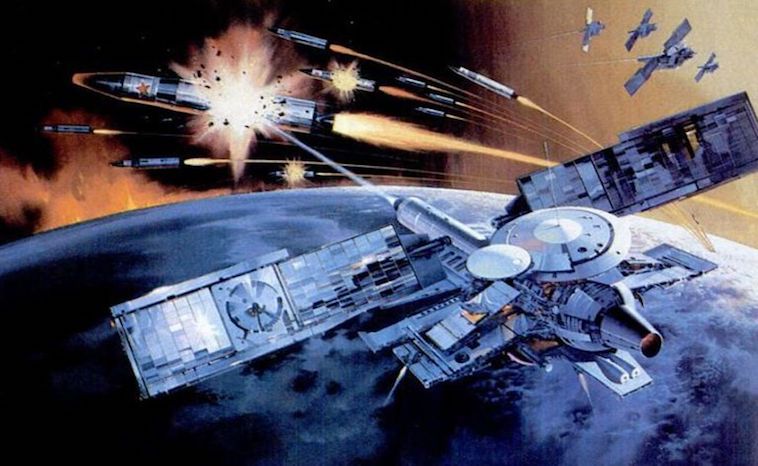Weapons in Space

Is it possible to use weapons in space? Do these weapons already exist? Read on to learn more about weapons in space.
During the cold war, several countries worked on developing weapons to use in space. The term “cold” refers to the fact that no direct fighting took place between 1947 and 1991 when the USSR (Soviet Union) and the United States heavily armed themselves for a possible nuclear war. In 1991, the USSR disbanded leaving the United States as the world superpower. What technology for weaponizing space developed during those years?
Orbital Bombardment
During the cold war, the Soviet Union deployed a Fractional Orbital Bombardment System. As one of the first space weapons developed, the Soviets successfully placed one Intercontinental ballistic missile (ICBM) in low earth orbit. They wanted to bypass the American weapon detection system. In the event of a war, their missile would drop bombs from space. In 1967 the Outer Space Treaty banned nuclear weapons in Earth’s orbit. By 1979, the SALT II treaty banned the deployment of orbiting bombardment systems. Later, the Soviets canceled their testing in 1983.

Credit: Popular Mechanics
Credit: Popular MechanicsEarth To Space Weapons
If you could launch a satellite into space, you could launch a nuclear weapon to hit a target halfway around the world. In 2007, China tested a weapons system that destroyed their own weather satellite. A kinetic impactor crashed into the satellite going 8 kilometers/second. No doubt, other countries have developed the same technology.
“Kinetic impaction involves sending one or more large, high-speed spacecraft into the path of an approaching near-earth object. This could deflect the asteroid into a different trajectory, steering it away from the Earth’s orbital path.” (NASA, March 16, 2015)
Along the same idea of kinetic impaction, the United States created the idea of using telephone pole-sized tungsten rods into space. They could become kinetic impactors when returning from space with enormous energy. Similarly, they would release the same amount of energy as a nuclear weapon, but not have the damaging radioactivity. The idea did not go into production because of the costs associated with placing them into space.
Space Weapons Treaty
States Parties to the Treaty undertake not to place in orbit around the Earth any objects carrying nuclear weapons or any other kinds of weapons of mass destruction, install such weapons on celestial bodies, or station such weapons in outer space in any other manner.
The Moon and other celestial bodies shall be used by all States Parties to the Treaty exclusively for peaceful purposes. The establishment of military bases, installations, and fortifications, the testing of any type of weapons and the conduct of military maneuvers on celestial bodies shall be forbidden. The use of military personnel for scientific research or for any other peaceful purposes shall not be prohibited. The use of any equipment or facility necessary for peaceful exploration of the Moon and other celestial bodies shall also not be prohibited.
Furthermore, countries may not build military bases on the moon. Military organizations may not create super soldiers up on the moon. The military still uses space for its own improvements. The development of Global positioning devices (GPS), came into existence because of the military. The Europeans have a similar satellite program called Galileo, and the Russians have GLONASS. Meanwhile, China, Japan, and India have their global positioning technology as well.
While countries work on methods to use space to their advantage it is good to know that treaties are in place to help everyone sleep safely at night.
